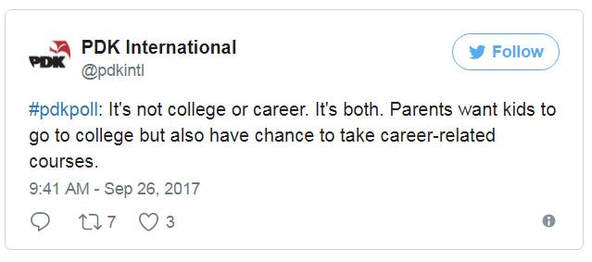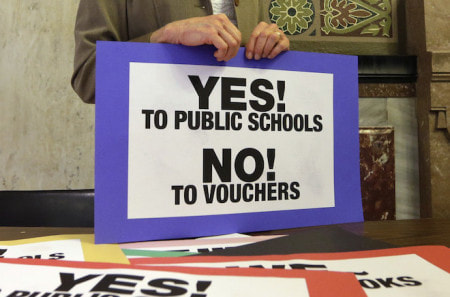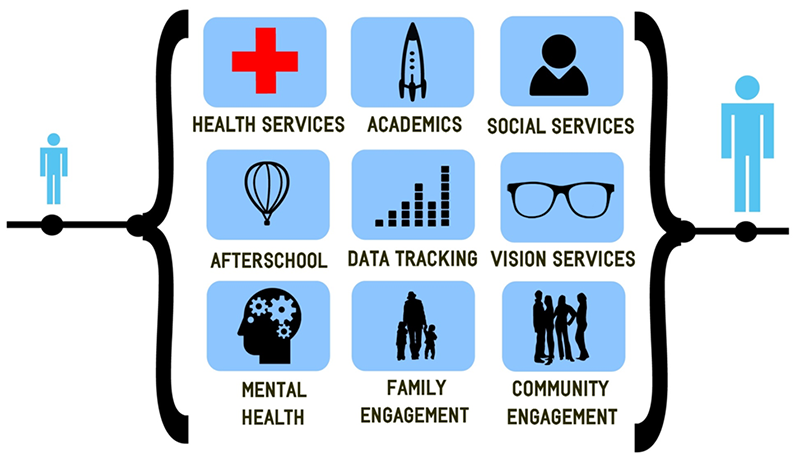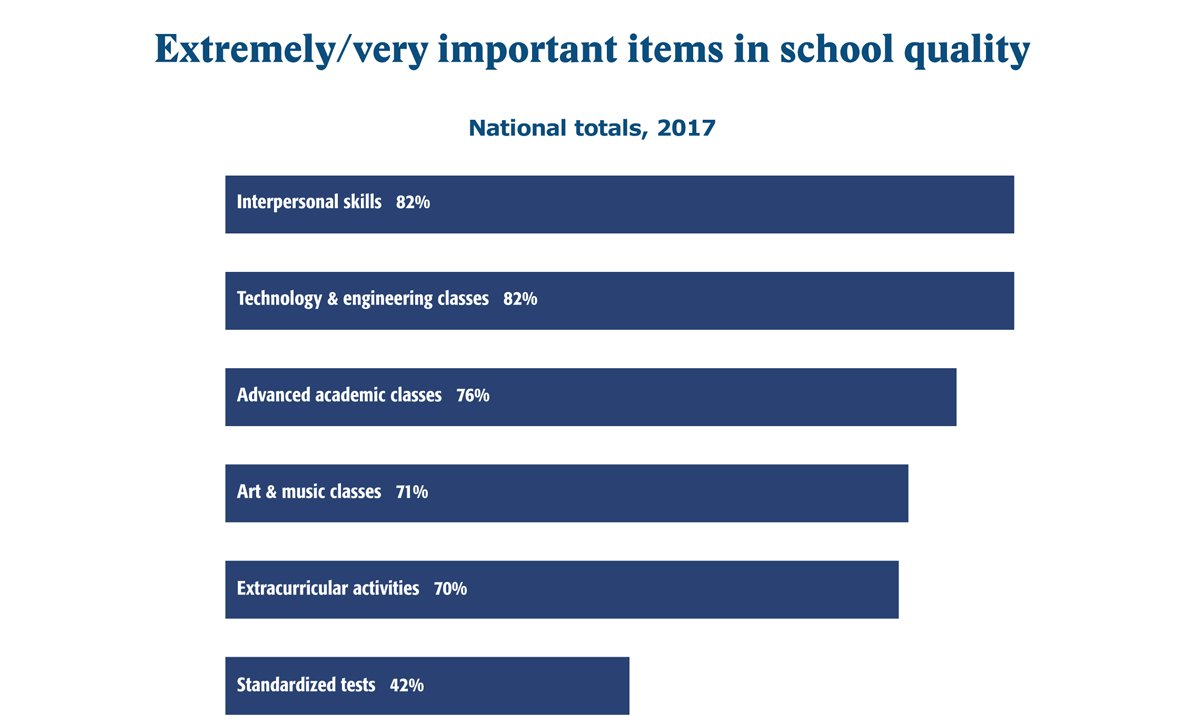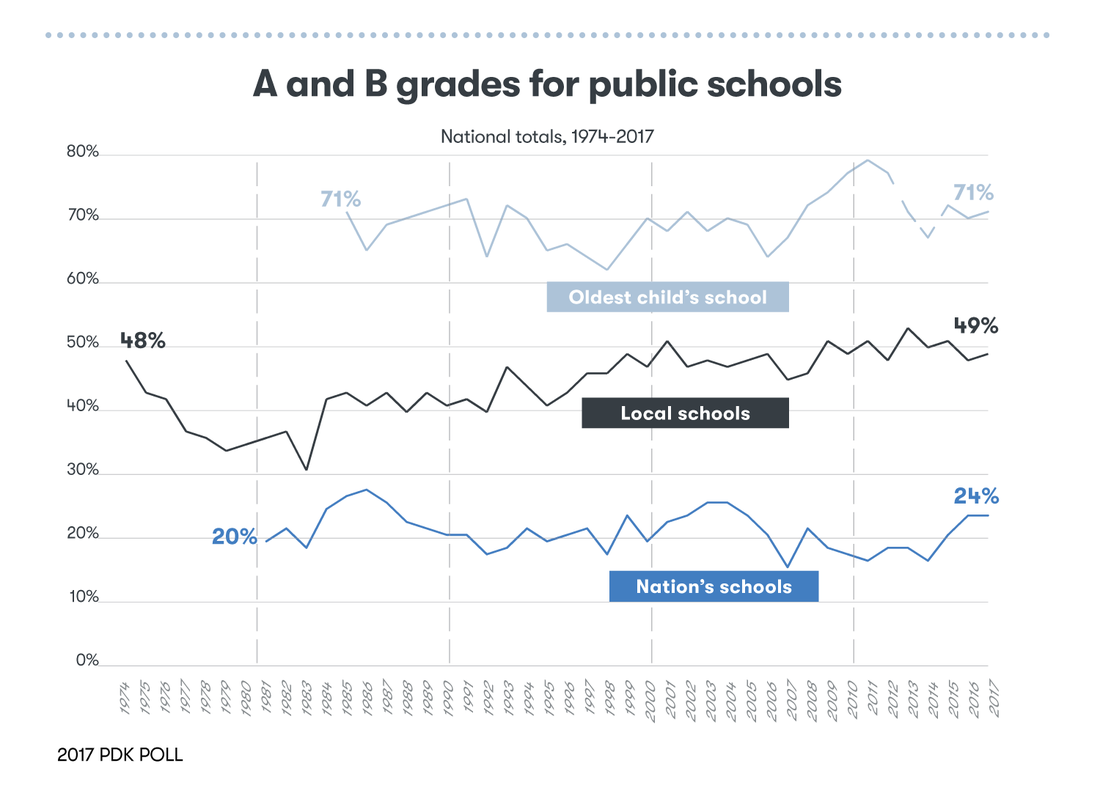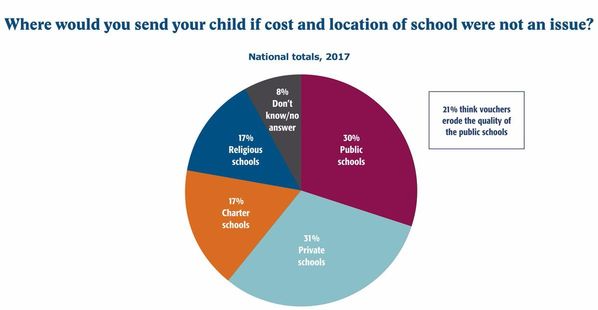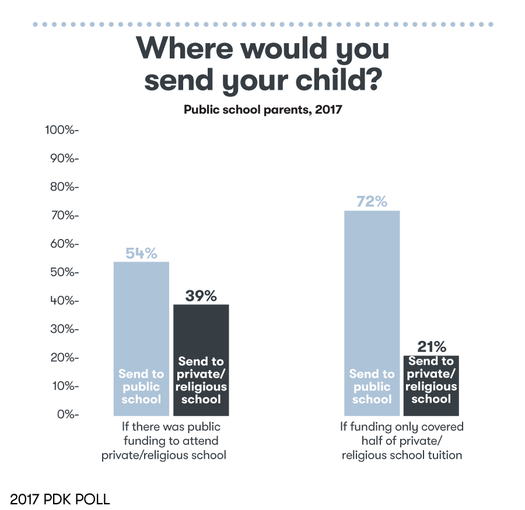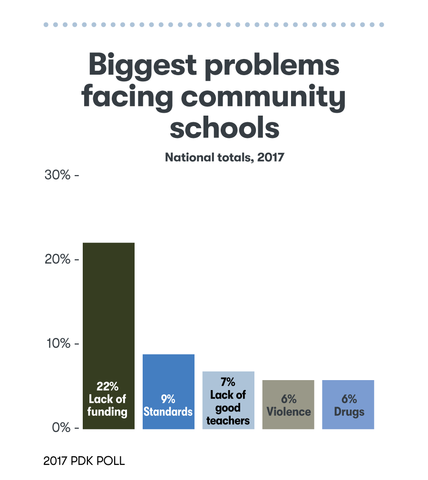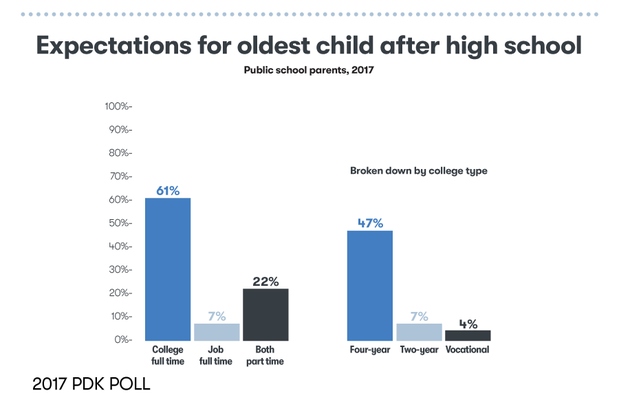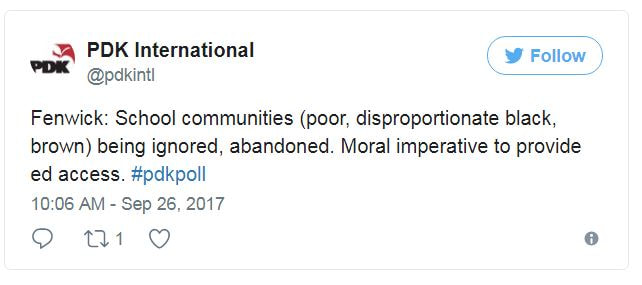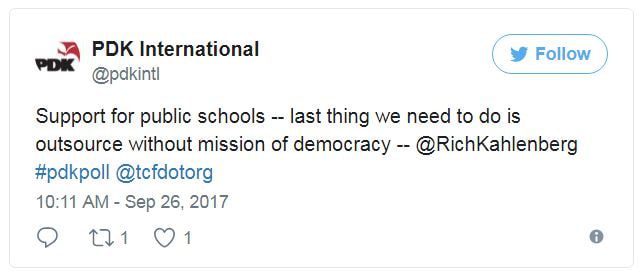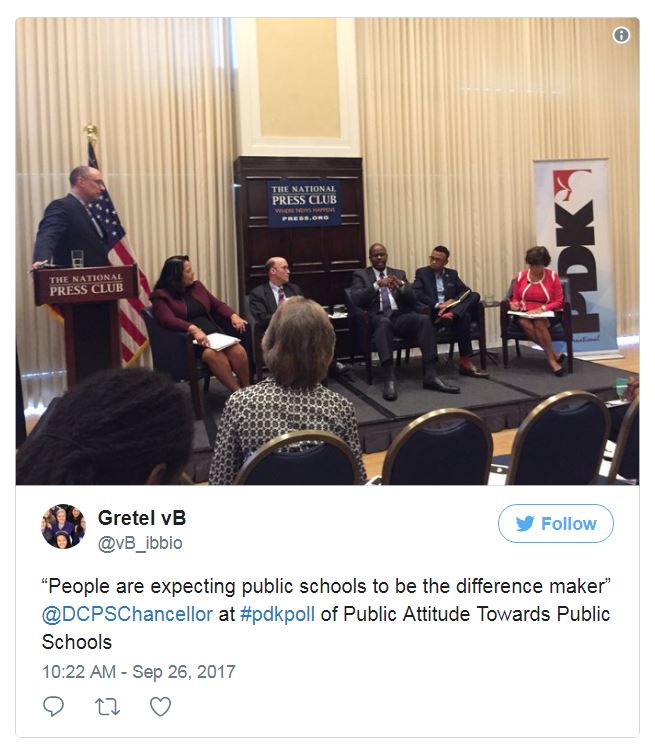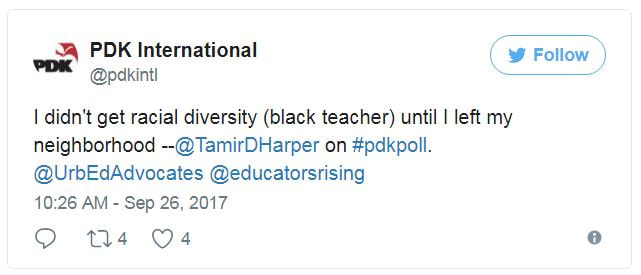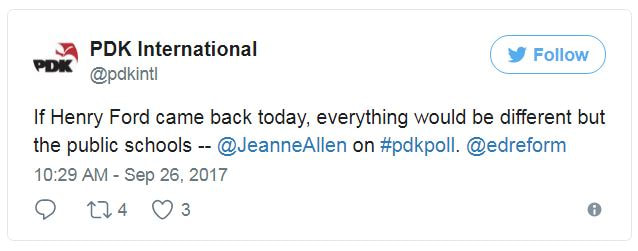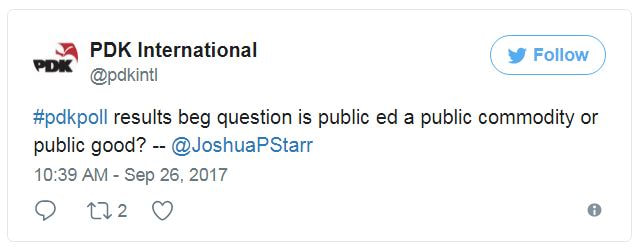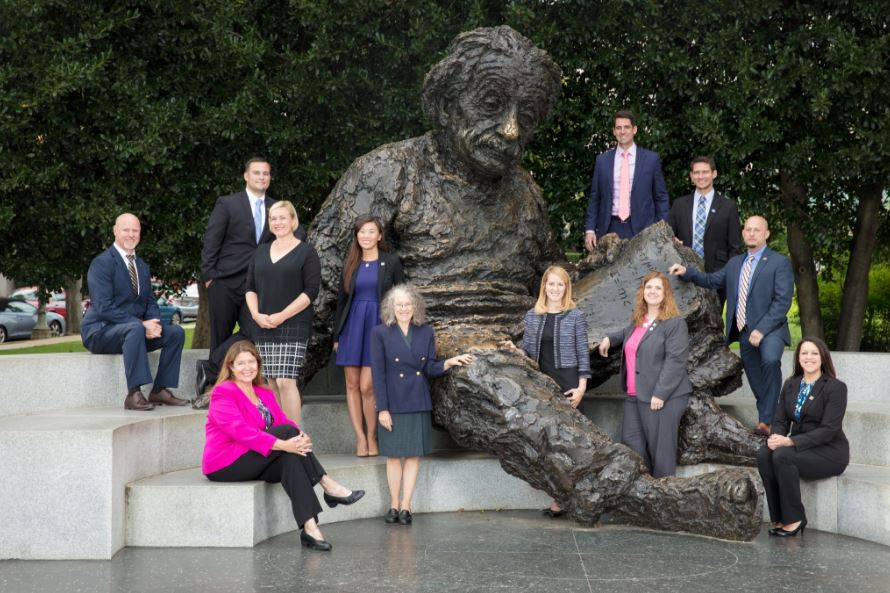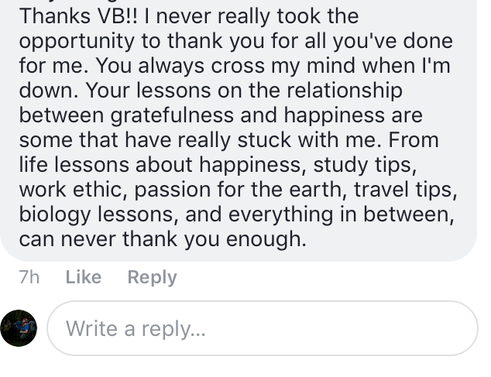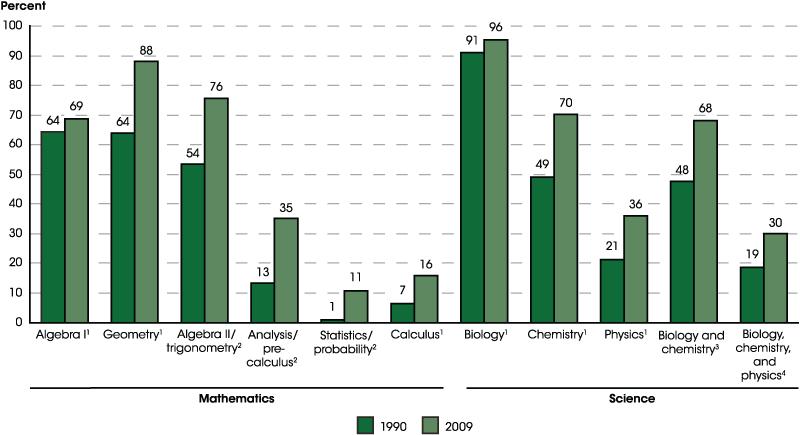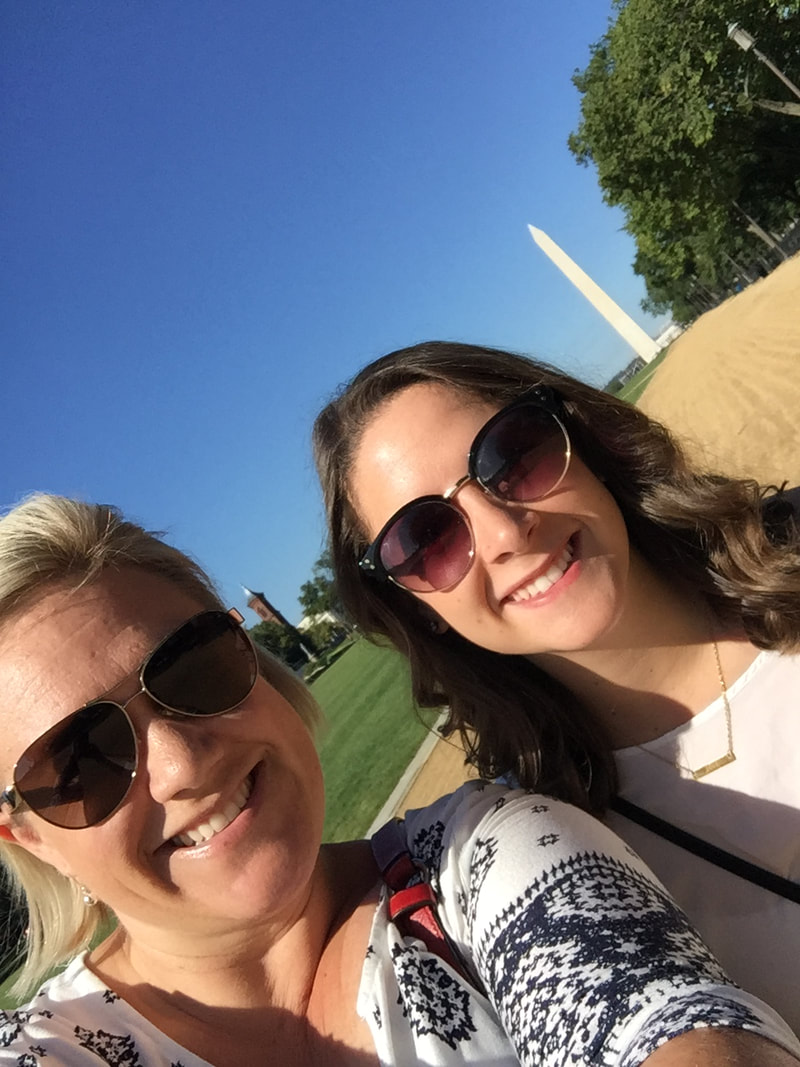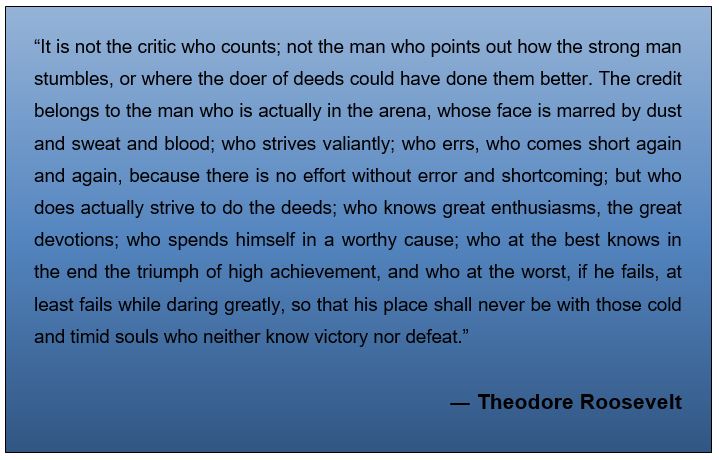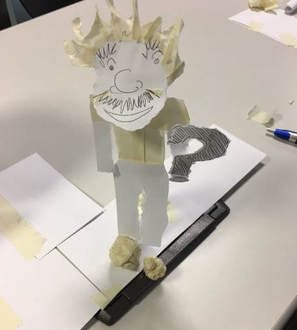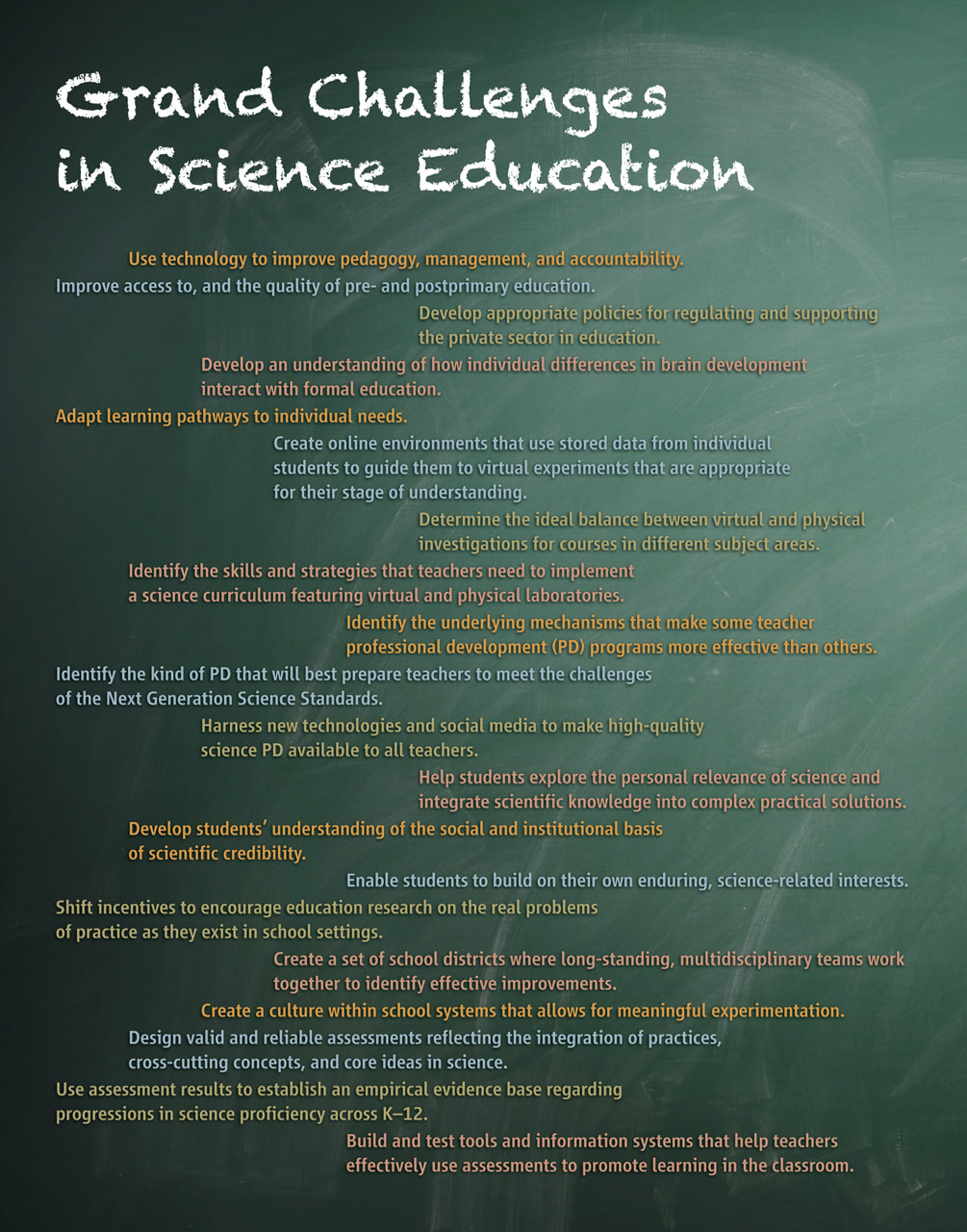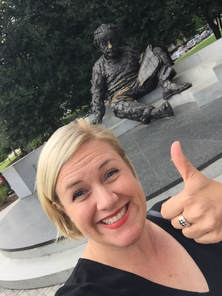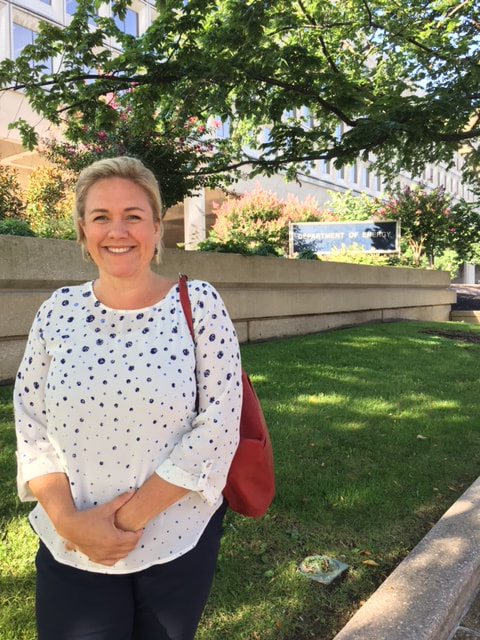 Photo @pdkintl via Twitter Photo @pdkintl via Twitter For 49 year, PDK International has been polling the American public regarding their attitudes towards the public schools. Yesterday I attended an event at the National Press Club at which the CEO PDK International (Joshua Starr) gave an overview of the poll results. Following the presentation, there was a panel discussion about the implications of the findings for education stakeholders. We all know too well that poll results can be misleading or incorrect, so we must have a healthy sense of skepticism around any findings. However, the PDK poll on education does follow a rigorous methodological process. In all, the results I'll share here are drawn from a sample size of 1,588 adults in the national population. There is a margin of sampling error of plus or minus 3.5 to 5 percentage points, depending on which sub-population was sampled. There is public access to the full national report. The thesis developed from the poll results is that academic achievement isn’t the only mission of public education. Under this thesis, the following key findings were shared:
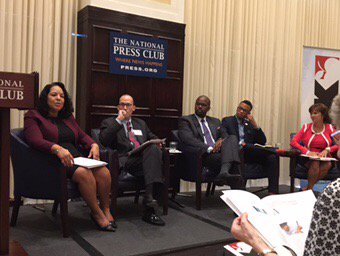 Photo @LLAMcNabb via Twitter Photo @LLAMcNabb via Twitter After the poll results were shared there was a interesting panel discussion about the implications of the information. There was a informative civil discourse between advocates from different perspectives (listed from left to right as seated for the discussion):
Leslie Fenwick, professor and dean emerita, Howard University School of Education Dean Fenwick commented that black parents are less satisfied than white parents with public schools. She commented that many students of color live in "education deserts" and that charter schools may be the "shelter in the storm" for families. I found her comment that the future majority in the United States (people of color) are currently the ones most suffering from being underfunded and under staffed by qualified teachers. Rick Kahlenberg, senior fellow, The Century Foundation Mr. Kahlenberg was heartened to know that Americans want schools to focus on broad educational goals, including interpersonal skills. He thinks the poll results show a clear public support for public schools. He commented that our nation should not, "outsource education to schools that don't have a core mission of supporting democracy." Antwan Wilson, chancellor of DC Public Schools I found Chancellor Wilson to be a powerful voice for the need to focus on the whole child. He said, "Academics are really important and LOVE is really important in schools." I think his comment is important for people to hear, especially since so many teacher enter the profession because they love kids and want to make a difference on individual kids lives. What's more, it is well established in educational research that kids will learn better from teachers they know care about them as individuals. "Our students need to FEEL the love we have for them." Love that. Tamir Harper, Educators Rising national student vice president Mr. Harper is a high school senior and future teacher. Can I just say that I wish more students at my school were considering a career in education? Mr. Harper spoke to the need to diversify the teacher workforce, stating that he didn't have a teacher of color until 9th grade and until after he went to school outside his neighborhood. His comment is not surprising, given that only 2% of nation's educators are black males and only 40% of our schools have any teachers of color on staff. Jeanne Allen, founder & CEO, Center for Education Reform I had the strongest reaction to the comments of Ms. Allen, an advocate for the parent choice/ school voucher movement. She seemed to imply that teaching and schools haven't changed for a hundred years. I think she is wrong on that point. Educational research and pedagogical advancements have changed the way schools educate young people. Henry Ford would not understand the value of many of the instructional approaches used in my classroom and those classrooms of nearly all of the teachers with which I interact. I'm sure Mr. Ford would have serious questions about why my students are dancing in class, why students are working together to problem solve without the teacher and why no textbooks are being used in the classroom. That said, Ms. Allen made a very good point when she stated that "information is no longer a commodity," suggesting a reason why many feel that interpersonal skills are so valued in schools. The presentation session finished with a philosophical question, raised by PDK International CEO Joshua Starr. He asked, "Is education a private commodity or a public good?" The question is posed to force a dichotomy in the answer. Me or us? The individual or the community? Of course, the answer can be both. In my opinion, K-12 education is about preparing an individual for life beyond high school (college and/or jobs) but also about ensuring our citizenship is educated and that our democracy works for the service of all.
 Copyright: orla / 123RF Stock Photo This week definitely marked a transition week for me, from classroom teaching (big fish in little pond) to exploring all that the Albert Einstein Fellowship will allow me the time and resources to explore (same size fish, much bigger pond). To be honest, early in the week I was feeling uncomfortably out of my comfort zone, even wondering if I was dealing with a bit of an inferiority complex; a feeling of not being competent or of personal inadequacy. So, being resourceful and a bit facetious, I did a bit of self diagnosis and took an internet quiz "7 Signs of Inferiority Complex". Long story short, I don't have an inferiority complex or imposter syndrome, I was just feeling lonely as a little fish in a big pond. Don't worry, the feeling of loneliness only lasted a couple of days. I faced it head on and did things to not feel alone or isolated. For example, I shared my feelings with Curtis, my wonderful husband and champion supporter. He's known me since I was 17 years old, he "gets me" and was able to share his personal insight into what I was feeling. I also met some new people and started to make friends; I chatted with parents at Carrick's baseball game, spoke to people in our apartment and made some plans with some of my fellow Fellows. Lastly, I reminded myself that I'll only be here for 11 more months and that I have grand intentions for what I want to learn, see and do while I am here! Especially helpful for me was meeting again with the other Fellows. There are 12 of us here and we've all been working in our placement offices for the past two weeks. It was nice to be able to reconnect, share experiences and ask questions together. 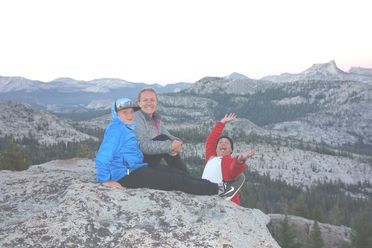 Each of us were tasked with bringing a photo to our meeting that represented something important in our life. I brought this photo, one of Curtis, Carrick and I hiking the 60 mile high sierra camp loop last summer in Yosemite. Each of us was asked to explain how the image connects to the Einstein Fellowship. For me, the connection is about taking on challenges, not necessarily taking an easy path, having a spirit of adventure, a sense of humor and the support of a each other in our family. Feeling more adjusted, I am now prepared to focus on what it is I want to do while I am here. Of course, there is important work for the agency in which I am placed. However, the Fellows are also given the time to pursue our own professional development curiosities and passions. When we met this week we were able to flush out some of the first drafts of our Professional Development Plans (PDP). While still a work in progress, my goals are:
For each goal, there are objectives and activities that I would like to explore over the course of the fellowship. I've already started work towards my goals and I am excited to see where the path leads over the next 11 months.
This morning I, along with four other Einstein Fellows, attended The Learning Policy Institute event on “Teacher Turnover: Why It Matters and What We Can Do About It.” The Institute recently published a report of the same title that offers a state-by-state analysis of the factors affecting teacher recruitment, retention and attrition. Who is leaving teaching? Why are they leaving teaching? And, what policies can be implemented to reduce the impact of teacher attrition? Highlights from the Learning Policy Institute research findings were shared followed by two panel discussions, one on the impact of teacher turnover and the other on policies that can be used to address teacher turnover.
The Learning Policy Institute has an informative interactive tool for understanding the teacher shortage. Obviously, I was immediately drawn to the data for Washington State. I was not surprised that Washington has an overall Teaching Attractiveness Rating of 3.5 (out of 5). As with every state, Washington has strengths and weakness in terms of different indicators of teaching attractiveness. For example, Washington has very high teacher qualification ratings (5 out of 5) but very low ranking for pupil-teacher ratio (1 out of 5). Play around with the tool below:
Like the Defense Against the Dark Arts class at Hogwarts, for the majority of students in the majority of schools, the teachers are always in transition, always in flux. Some facts and tidbits from the research report and presentation today that were especially interesting to me are:
The Learning Policy Institute as a powerful, interactive tool for those interested in estimating the financial cost of teacher turnover at a local level:
After a presentation of the research findings, the impact of teacher turnover was discussed by members of the first panel. Of course, the students are the most important stakeholder in the education arena, so it was wonderful that the panel included a Californian high school senior who could provide a first hand account of her experience with teacher attrition. A school board member from Maryland described how many districts focus on recruitment without thought to the other end of the spectrum… retention. The money saved by school districts by reducing teacher attrition could be used for increasing teacher salary, reducing the facilities maintenance backlog and/or reducing class size.
A second panel discussed policies to address teacher turnover, focusing on the need to take a comprehensive, local approach. My home state of Washington was featured as one of the panelist was a Representative Santos, who serves a legislative district in and near Seattle. There has been a 35% drop in the number of people going into teacher education programs, and in Washington nearly ⅓ of teachers are nearing retirement age. That is a recipe for a teacher shortage. Representative Santos and the Virginia Superintendent of Education outlined strategies to address the teacher shortage such as “grow your own” programs, teacher residency programs, and mentoring/induction programs. The education division program director for the National Governors Association mentioned the electoral opportunity, as there will be 41 governor elections in 2018. In the last 25 years, the percent of teachers leaving the profession each year has risen (from 5% annual attrition in 1992 to 8% attrition in 2017). Correlated with the increase in teacher attrition are decreases in salaries, decreases in working conditions, increase in class size and an increase in “teacher bashing”. An overarching theme from both panels was the need to shift the narrative and perception of teachers, raising the respect of the teaching profession. In the words of Representative Santos, “we need to stop sucking the joy out of this profession!” My curiosity is on the role of the classroom teacher. Policy approaches seem to be happening TO teachers. I want to know what can be done BY teachers to change the dialogue about and perception of teachers. Teaching is an incredibly rewarding profession and we, as classroom teachers working "in the trenches" need to work to #keepourteachers "It is the supreme art of the teacher to awaken joy in creative expression and knowledge." Albert Einstein Those of you who know me, know that I LOVE CLASSROOM TEACHING. I love the energy, humor, variation, and challenge of teaching. During this time of year when my colleagues and former students are returning to classrooms, I am thankful to have the opportunity to pause and reflect on my career as a teacher.
I was curious about the numbers of teachers in the United States, which lead me into a web of data and estimates and surveys and graphs. What I present here is really a "quick and dirty" summary of what I can find with a few minutes of web searching. This is not dissertation level research, however, it might elucidate some of our country's need for more teachers! According to the Bureau of Labor Statistics, there are 961,600 secondary (middle and high) school teachers in the United States. Of that, from what data I can find with a quick search, there are about 15.1 million secondary school students and about 211,000 science teachers. A quick division and I estimate there are roughly 72 kids per secondary science teacher in the United States*. That's a lot of impact made on individual kids by individual science teachers. And, a lot more kids are taking science classes than in the past. Percentage of High School Graduates who Completed Math and Science Courses in High School I guess my point here is that science teachers make a big difference in the lives of individual kids, and that impact really scales up to having large impact in our country.
* 72 students per teacher is a National average. Obviously, averages are important... but for perspective, last year I taught about 160 kids. So, there is likely a very large standard deviation around this average.
** let me know if you are my former student and now are a science teacher yourself! The start of the school year always brings a tinge of nervousness, a bit of first day jitters. This year was different; although there was still uncertainty… new place, new people, new roles and new responsibility. Today was the first day of the job I’ll be leaving in one year, the Albert Einstein Distinguished Educator Fellowship. There are a total of twelve teachers serving as Fellows this year all converging on Washington D.C. from various home states. We all have different motivations for leaving our lives back home; some are looking for a permanent change, some are looking for new challenge and some are looking to reinvigorate their teaching practice. Unlike me, some of the Fellows feel unhappy and/or underappreciated in the teaching position they left. All of the fellows want to make a difference in the lives of kids and ensure our nation is benefitting from having educated citizens that understand and value science, technology, engineering and math. Our “cheerleaders in the room” welcomed us to the Fellowship, reminding us that we are unique in our willingness to uproot ourselves and “get into the ring” here in Washington, D.C. The Roosevelt quote (with appropriate pronouns implied) served as our touchstone throughout the morning.
The oversight, history and funding of the Albert Einstein Distinguished Educator Fellowship were shared with our group. The Albert Einstein Distinguished Educator Fellowship act was developed because “elementary and secondary school mathematics and science teachers can provide practical insight to the legislative and executive branches in establishing and operating education programs.” Since the act was passed in 1994, there have been 305 individuals who have served in eight federal departments or agencies. Being a federal government fellowship, there are of course many rules, regulations, forms and logistics that needed to be discussed during our orientation. It was again made clear that the Fellows are not employees of the federal government. Depending on the agency in which we are placed, the Fellows have different responsibilities and important roles while here, however we aren’t “feds!” This year, there are Fellows placed at the National Science Foundation, National Aeronautics and Space Administration, on Capitol Hill in Congressional Offices and at the Department of Energy Office of Science (me!). During the Fellowship, there will be multiple learning opportunities. We will meet with distinguished scholars and policy experts with the goal of relating everything back to the classroom; a common question I should be asking myself is, “how will I be using this information one year from now when I am back in front of students?” Additionally, a key aspect of our Fellowship is self directed professional development. Fellows must tie our professional development activities to two of three goal areas:
Plenty of Challenges for All. Hines, P., Mervis, J., Mccartney, M., Wible, B. Science. 19 Apr 2013: Vol. 340, Issue 6130, pp. 290-291 I have yet to determine my focus areas, as there are so many education issues that are of interest to me, both at the national and local levels. However, one headline from the New York Times (August 2015) best summarizes what I perceive as the greatest educational issue at both the national and local level: “Teacher Shortages Spur a Nationwide Hiring Scramble (Credentials Optional).” The recruitment and retention of highly capable teachers into STEM fields is a complex, multifaceted problem to which I might like to dedicate my time. What I find intriguing about this issue is the magnitude and complexity of the problem. I have read reports and articles about possible causes and effects of the teacher shortage (for example, the 2016 study by the Learning Policy Institute). However, given the day to day demands of my job, I have not had the time to devote to gaining a true understanding of the intricacies of the problem. My personal experience with the teacher hiring and retention problem has been via my work on the University of Washington’s (UW) Professional Educators Advisory board. The UW has seen a noticeable decreasing trend in the number of applicants to their Master’s in Teaching Program. Many potential teacher candidates are either choosing to not become teachers or are electing quicker, non-traditional routes to initial teacher certification. In addition to fewer people pursuing careers in education, those who elect to enter educational careers often do not stay in the field. In my role on a Washington State policy advisory panel, I have explored the effects that secondary tier certification demands placed on teachers who are already struggling to find the time (and often money) to dedicate to a teaching career. I know the trends in Washington State are mirrored nationally. The teacher shortage challenge facing public education is immense, necessitating a multifaceted approach to a solution. Perhaps one piece of the solution puzzle is to increase public awareness and perception of the important role of STEM teachers. I believe that the public has a misunderstanding of the work of STEM (and all) teachers; one that is perhaps more negative than reality. Who can blame people for not wanting to become (or remain) a teacher when the messages sent from those in the field are undesirable. Yes, class sizes are too large. Correct, there is not enough time or space or supplies or money, or… or… or…… What is not often communicated to the public is the benefits of teaching; the great delight, immense humor, incredible learning and a true sense of making a difference in the life of others. I would like to find ways for teachers to spread positive messages about the joy and value of teaching. I’ll leave you will a quick selfie snapped at the Albert Einstein Memorial at the National Academies of Science Building. Don’t fret, a much more professional head shot (hopefully with less forehead wrinkle) will eventually be posted too!
|
Archives
July 2018
|
I give many of my IB Biology resources away, for the benefit of students and teachers around the world.
If you've found the materials helpful, please consider making a contribution of any amount
to this Earthwatch Expedition Fund.
Did I forget something? Know of a mistake? Have a suggestion? Let me know by emailing me here.
Before using any of the files available on this site,
please familiarize yourself with the Creative Commons Attribution License.
It prohibits the use of any material on this site for commercial purposes of any kind.
If you've found the materials helpful, please consider making a contribution of any amount
to this Earthwatch Expedition Fund.
Did I forget something? Know of a mistake? Have a suggestion? Let me know by emailing me here.
Before using any of the files available on this site,
please familiarize yourself with the Creative Commons Attribution License.
It prohibits the use of any material on this site for commercial purposes of any kind.
